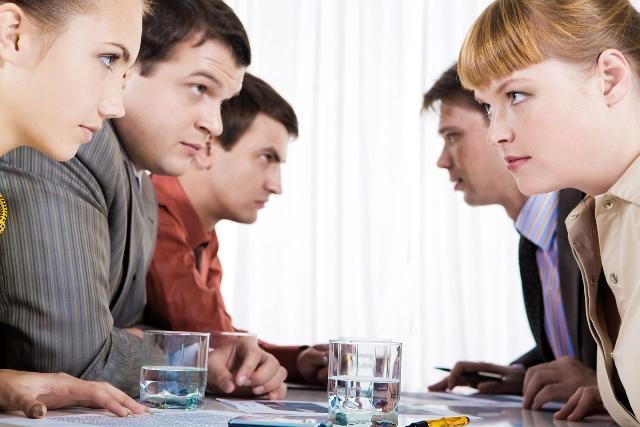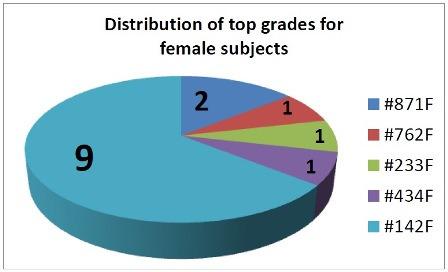
Reading time: 9 minutes
Since acquiring the conscious mind humans were preoccupied with the issue of attraction, in order to find a mate and ensure the survival of specie.
In Ancient Greece the sculptors issued the first ideal bodily proportions for what was, at that time a perfect body worthy of attraction and even godly praise. Nowadays, given the research boom, there have been identified a lot of factors for both genders that are sparking one another’s interest. Regarding physical attractiveness, women prefer men who have a masculine figure (preeminent jawline and cheekbones), have broad shoulders, are around 6 feet tall, fairly muscular and not-so-hairy. On the other side, the ‘checklist’ for men it comes to choosing women comprises: their facial features (symmetry and proportions), age, breasts and buttocks (no wonder ey?), waist-hip ratio, long legs, long hair and light skin. Although there are many more factors from the social field, economic field and psychological field that come into play, the study was not aimed at this area, and as you shall see, I have isolated these variables to not interfere with our results.
Despite all this vast knowledge regarding our split-second decisions, when struck by the reckless arrow of Cupid one will find her/himself left wondering if the feelings are reciprocated WITHOUT actual intervention, and how dreams would come true this way.
It is such that the idea for this experiment has flickered: does really like attract like? Is there actually someone that was ‘meant’ to be or is it just a coincidence when two individuals match based on their better attributes?
Through the experiment I have tried to eliminate as much as I could, the factors that come into play when it comes to attraction, we test if two individuals who have never met before reciprocate their feelings of attractions. My assumptions are based on the theory of genetic compatibility and that of mirror neurons.
It has been scientifically proven (Garver, 2006) that genetics have quite an impact when it comes to physical attraction. The responsible genes are the ones that code the identity of each cell (Major Histocompatibility Complex) so that the human body can differentiate ‘self’ from ‘non-self’ and thus signal the immune system when and what to engage. Humans are subconsciously analyzing by smell the making of each of our encounters’ immune system, constantly searching for a MHC variant as different of ours as we can to enlarge the immunity spectrum and ensure the competence of our offspring.
Mirror neurons, the other pylon upon which the experiment rests are part of a concept that has emerged in the last 10 years in the field of neurosciences with wide applications in all the fields of modern psychology. Basically, as the name implies our brain has specific areas of mirror neurons that trigger making us feel the same emotions that we see someone displaying. For instance if you watch a scared face conveying horror or anxiety, you will decipher then experience yourself the same feelings.
Have a go and try look at her expression for a mere 20 seconds:

Do you feel your heart pounding? Yes, that’s empathy and it happened because your mirror neurons fired. However, mirror neurons come into play in seduction as well. If one person transmits via subtle facial expressions his desire, chances are his partner will unconsciously pick them up and feel them as well.
Materials and Method
For the experiment I have gathered a number of 28 eager volunteers: 14 males and 14 females, whom have never met before. Before the experiment they were separated in two rooms. They were asked to sit at a table face to face without talking and keeping the rest of the interactions to a minimum for 1 minute or until they were both creped out and asked to leave. Everyone received a questionnaire sheet and was instructed prior to the beginning of the experiment to rate the person opposite to the table with grades on a scale ranging from 1 (the least unattractive) to 10. The rating rule was to not judge the person based on particular features and just award the grade based on ‘a spontaneous feeling of attraction’.
Everybody was rotated until each woman stared at each man and vice-versa so that there have been obtained 196 Cartesian pairs. We felt the need to organize a second trial in this very experiment to ensure a proof for the grades. At the end of the first activity all the subjects were reunited in a room men and women facing themselves while standing. They were instructed to sort the members of the opposite sex in a descending manner so that the most attractive subject would be the first and so on.
At the end of the experiment the questionnaires were collected, the subjects were finally allowed to mix and more important open their mouths for drinks and chatter.
Results
After all the data has been moved from print to digital calculations began. Naturally, with the enthusiasm of a little kid I looked for evidence of reciprocation, that meaning to see whether a subject that awarded the highest grade to another received his or her highest grade in return. The results were that only 4 subjects out of 28 experienced this phenomenon (2 pairs out of 14) while the rest of the subjects focused their grades on a small group that seemed more attractive than the rest:

In the first pie graph it can be seen that 2/3 of males awarded their highest grade to the same female subject #142F (subject codes were purposely changed to keep ID secret) instead of having an even distribution.

Although females showed more diversity when it came to preferences regarding men, not all 14 of them had their share of the pie(graph) with subject #52B getting ahead of everyone with 1/3 of total number of highest preferences.
The results of the first part of data processing were obvious and irrefutable. However, when typing in the questionnaires I observed that even though the first places had only the subjects listed above, the rest of the order and distribution of the grades varied for each subject so I pursued onwards for statistical proof.
I have decided to calculate for each subject that mean of the grades he received, as well as the mean of the grades awarded by his/hers ‘top 5’(candidates our subject most appreciated), and also the mean of the grades received from his/hers ‘flop 5’(candidates our subject least appreciated).
The means of the above means can be seen in the following table:
Global mean Mean of Top5 Means Mean of Flop5 Means
6,018214286 6,190285714 5,835714286
But is it statistically significant? For this question I have applied the one-tailed T Student test for pairs and equal distribution to the list of means above I have calculated for each subject (don’t worry, you don’t have to understand this part, it’s just study protocol). The results:
T test for mean and top5 mean T test for mean and flop5 mean
0,054260441
0,029853809
Statistically insignificant Statistically significant
Conclusions
Although we could not directly prove the theory of reciprocal attraction, we discovered the phenomenon of reciprocal repulsion, meaning that if you don’t like someone, chances are you’re not liked back either. By inferring from this phenomenon one can get to the conclusion that if two people repel, others may as well attract.
However, the findings above proved that the ‘unseen force’ of reciprocity acts at a way too subtle level to matter in our choices regarding attracting partners and we cannot stake our chance on this thing alone because at any moment someone better can come and nab our desired one but it certainly exists as proved by its evil twin, the reciprocal repulsion.
The study does not mark in any way the end of romance, daydreaming and warm, fuzzy feelings, it does not aim to clip the wings of anyone. I personally consider that it will shine light upon the path of those that desire that much a partner and will now motivate them even more when they know that a subtle force is aiding them. My advice to them is to invest in their selves and combine all the powers that favor being liked back: buy some decent clothes, begin practicing a sport or hit the gym, develop your social abilities like, say charisma, learn body language, take better care of themselves and raise their self-esteem, which will surely boost them in the top of the preferences that made up the pie charts.
It is said that “Fate favors the prepared.” This could be observed in the study as well, leading us to believe that once one has his things together the reciprocal attraction comes into play: the most sought after man and the most sought after woman have reciprocated their feelings of intense attraction and have formed a pair that had matching preferences.
I’m just left wondering, if the phenomenon of repulsion exists, how come there are stalkers that haunt you to the end of hell? Either this is an exception from the general rule or we secretly like them and are too afraid to admit  .
.
Bonus: 3 fun facts
- Men are clumsier than women having filled the wrong boxes in the questionnaire, forgetting to write their own ID number on the sheet.
- Women are pickier than men when it comes to partners: the grades women assigned to men were 21% lower than those of men.
- Females were more curious than men when it came to request feedback regarding their received grades: 71% of women participants requested feedback as opposed to just 41% of men.
*** Experiment conducted and written by Smartass Academy’s newest member: “The Doctor” ***
